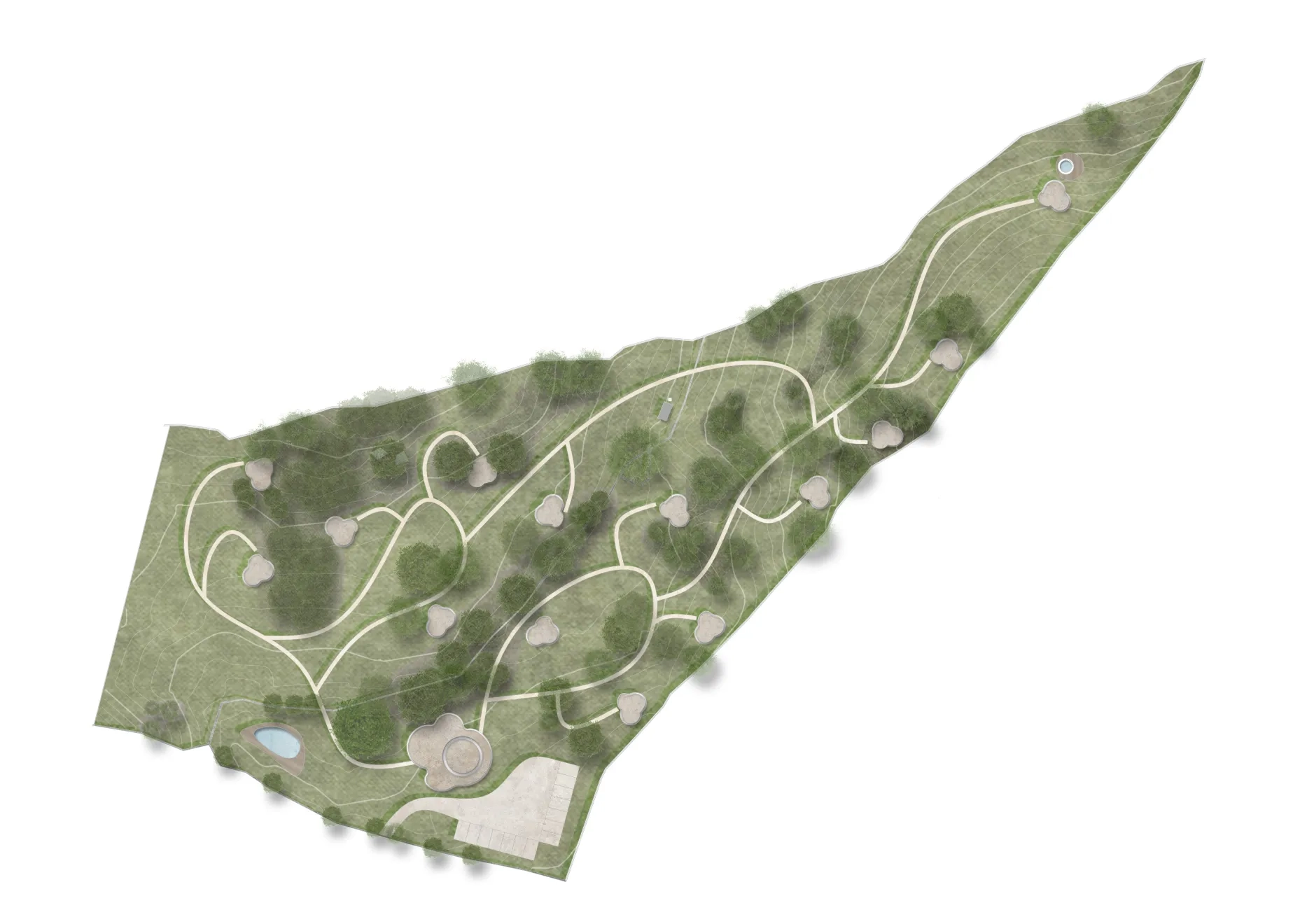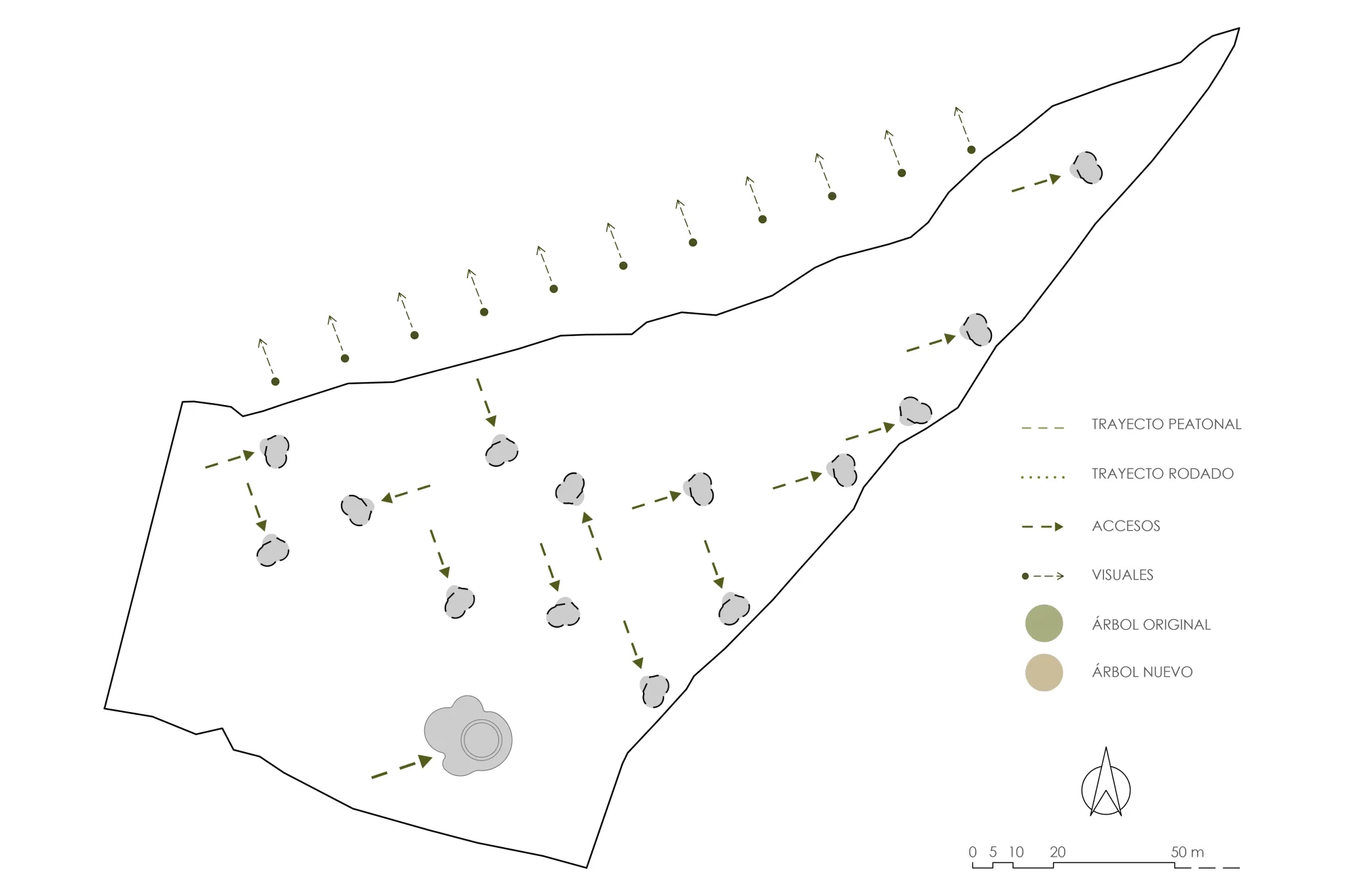A rural tourism landscape project

Date
2020
Location
Ávila (Spain)
Type
Hospitality
Trees
126
Area
20.700 m²
Status
Concept
Landscape architecture projects that take sustainability, the relationship with the surrounding environment, and collaboration with local communities into account are a perfect example of how tourism can be transformed into a driver of socio-economic and cultural development. By involving people from nearby villages in the tourism initiative, cultural exchange is fostered and mutual understanding between visitors and residents is strengthened, enriching the overall experience.
This social interaction can reinforce community bonds and create a sense of belonging and local pride, which is essential for building collective identities. Moreover, by sharing their knowledge and skills, local residents can actively contribute to the project, generating a dynamic of collaboration and empowerment.
Landscape architect and theorist Ian McHarg (1969) in his book Design with Nature emphasizes the importance of integrating landscape planning and design based on the natural characteristics of the territory. McHarg advocates an approach that seeks to conserve and regenerate the landscape, promoting the adaptation of architecture to the environmental conditions and ecological needs of the area.
DSTUDIO´s initial proposal was to situate the cabins along the mountainside to create a space in contact with nature and generate minimal impact on the environment. We made the decision not to allow the felling or clearing of any species of tree or bush during the entire construction process. This approach, which involves minimal human intervention, is essential to guarantee the preservation of the ecosystem and biodiversity in the project area.
This design philosophy also has benefits in terms of energy efficiency and use of natural resources. By taking into account sun exposure, we ensure that the cabins make the most of natural light and heat, reducing the need for artificial energy for lighting and heating. Additionally, by minimizing impact on the terrain and vegetation, we promote water infiltration and prevent soil erosion.
We also believe that our project approach could have a positive effect on the environmental education and awareness of tourists, which in turn can contribute to the promotion of more sustainable practices in other aspects of their lives.











